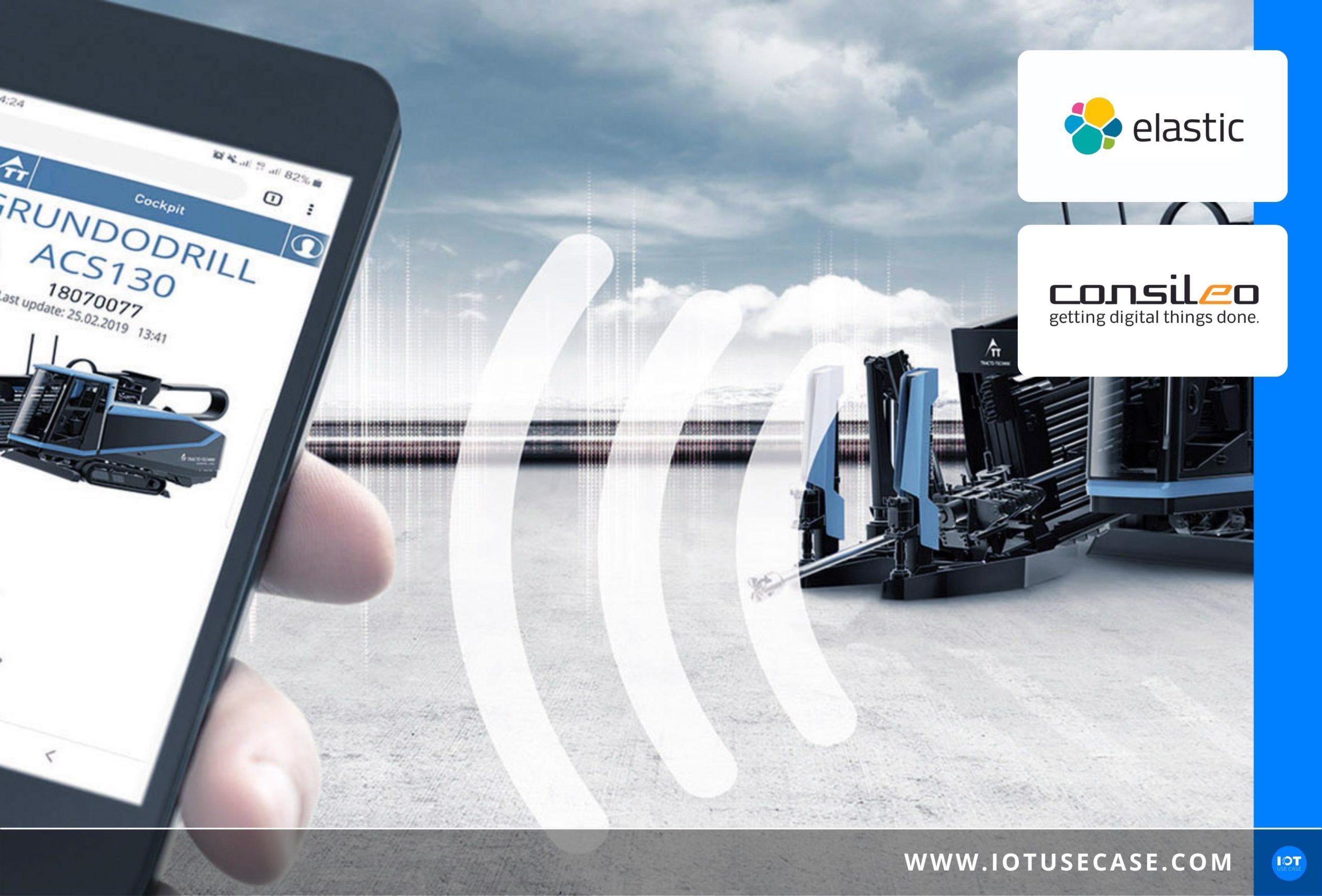Episode 70 at a glance (and click):
- [06:54] Challenges, potentials and status quo – This is what the use case looks like in practice
- [14:32] Solutions, offerings and services – A look at the technologies used
- [30:30] Results, Business Models and Best Practices – How Success is Measured
Podcast episode summary
More and more companies in the mechanical and plant engineering sector are focusing on further development and on finding and expanding new areas of business.
The IT service provider consileo has made it its business to create, design, provide and support software. Both in the IoT and in the cloud environment. As a further segment, consileo deals with the topics of security and compliance. New technologies, co-developed by machine engineer and managing director Sebastian Fischer, are intended to provide customers with noticeable and measurable results.
On the other hand, there is Elastic, a kind of “booster” for search queries or even analytics platform. Elastic supports businesses and individuals, providing them with software solutions to process data volumes at the largest scale in near real-time. David Schreckenberg, Enterprise Account Executive, will explain to us in detail which tools are used to process data.
In today’s episode of the IoT Use Case Podcast, we find out how these two companies came together, what special machinery manufacturer Tracto-Technik has developed together with Elastic for an IoT platform, and how data ingestion, processing, evaluation and analysis work in this context.
Podcast interview
Welcome Sebastian and David. Sebastian, what I found very exciting when we met was your personal journey. Because you have many years of professional experience in a medium-sized mechanical engineering company, but you have also dealt specifically with IoT topics and business development. This is particularly exciting in the context of new business areas. I think a lot of people out there are new to this segment, and they’re just learning the ropes. How was this trip for you?
Sebastian
That was very exciting, no question about it. I’m a classic mechanical engineer, and with the topic of digitization, you get into completely new areas. It also has a bit to do with the fact that I personally have a great affinity with new technologies, like to try out new things and have always thought innovatively. Then you might find it easier to get into the topics. Of course, this is a new world. Software development, all the terminology that comes up. The way of working is different, the technologies are completely new. It also takes a lot of time to get used to it.
In addition to the actual development, there are also topics from the legal framework. How do you deal with the issue of marketing? How do you distribute digital products in the first place? You are already involved in business development, but you are also far away from development.
Challenges, potentials and status quo - This is what the use case looks like in practice [06:54]
On the one hand, we want to understand your technologies, especially with the search technologies, what it’s all about. On the other hand, from consileo’s side, what projects there are. Sebastian, what use cases and real-world projects did you bring with you today?
Sebastian
It is about the customer Tracto. Tracto builds special machines for trenchless pipe laying. So when pipes have to be laid trenchlessly under roads or rivers, where you don’t want to interrupt traffic, where there may be obstacles in the way, Tracto produces the right machines. At this point, Tracto had the major goal of further advancing the topic of “digitization”. Digitization on several levels in the company, including in the product area. The question was asked: What does digitization mean in the product? Both for the customer and for the end user who ultimately uses the machine. What benefits can Tracto also derive for itself as a company from digitization from the topics?
What are we talking about in concrete terms? Tracto has developed and built an IoT platform with us where machine data is collected. These are used at various levels. On the one hand, the end user uses it to log board data, for example, or to do things like fleet management. To see how the machine is doing and what it is doing. Of course, also to optimize internal service procedures and service processes at Tracto. I don’t want to talk about predictive maintenance yet, but first having the ability to see what the machines are doing in the field based on data? How are the machines doing? What errors occur? What anomalies might you see in the data? That makes it very exciting, and that puts Tracto in a position to do proactive service, rather than reactive service, in the future.
Put that together and you have a great benefit. Once on the customer side, who automatically receives data from the machines to log data. But also for Tracto as a customer itself, which is able to provide better service.
Solutions, offerings and services - A look at the technologies used [14:32]
Together with Tracto, you built the IoT technology, or rather the architecture, and co-developed the app. I’d like us to shimmy from data ingestion, to processing, to evaluation and analysis. How does the data acquisition work and with which hardware?
Sebastian
The data that is generated essentially comes from sensors and actuators on the machine. Pressure sensors, position sensors and speed sensors provide signals to a machine controller, a PLC controller, which in turn passes the data to a gateway. This is a PC that receives the data, processes it accordingly, and then also sends it to the cloud. However, this also ensures that data is buffered if there is no network coverage. This is the main use case why we approached Elastic. These offer a very slim and elegant solution.
Results, Business Models and Best Practices - How Success is Measured
In the end, it’s always about the business case. How do I save the costs? Do I build a new business model from this or can I increase my sales through new services? Sebastian, how was that for Tracto? In summary, what is the outcome and business case for your client?
Sebastian
I think you can see the business case in two places. By using innovative techniques and also offering benefits to the customer, for example in drilling data acquisition, you hopefully sell more machines, and with more machines you have more business. That is certainly a driver. You have to face up to digital change.
The other thing, of course, is the reduction opportunities in service that arise. By possibly having to go on fewer field calls, by having the data, I also don’t have to send a service technician out. This results in savings of between 15 and 30 percent.
Transferability, Scaling, and Next Steps - Here's how you can use this use case. [33:43]
The last question in the direction of use cases. Sebastian, you have a wide variety of use cases that you can think of. Whether that’s the production line I mentioned, which you can solve with Elastic, the corresponding data handling, or coming out of that core business with Tracto. That’s probably transferable to other machine and plant builders, too, what you’ve done, right?
Sebastian
Yes, definitely. This is very generalizable, because at the end of the day, many construction machines have the requirement – they are also in the field, also have poor network coverage under certain circumstances. There is the same use case as with Tracto. But there are other use cases, such as a steel mill, which generates large amounts of data and wants to have it analyzed, where the solution works just as well.













